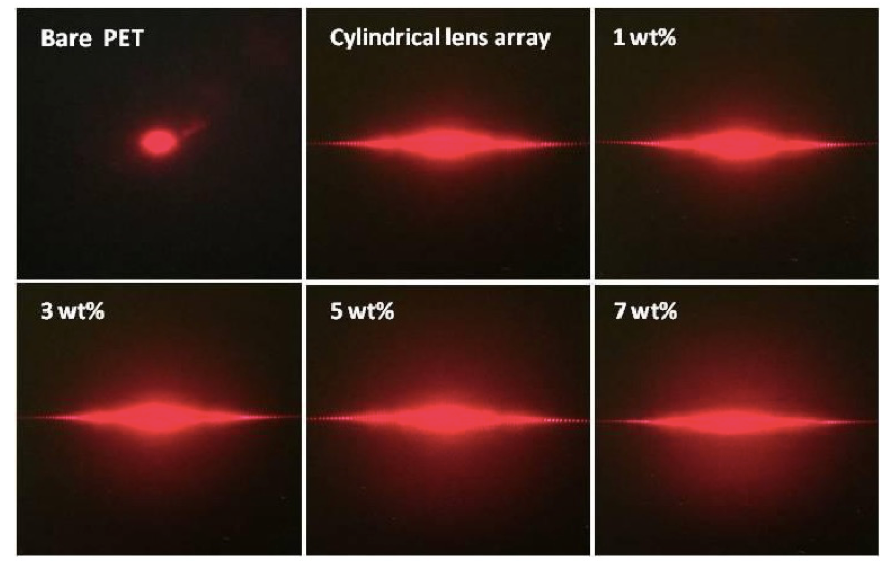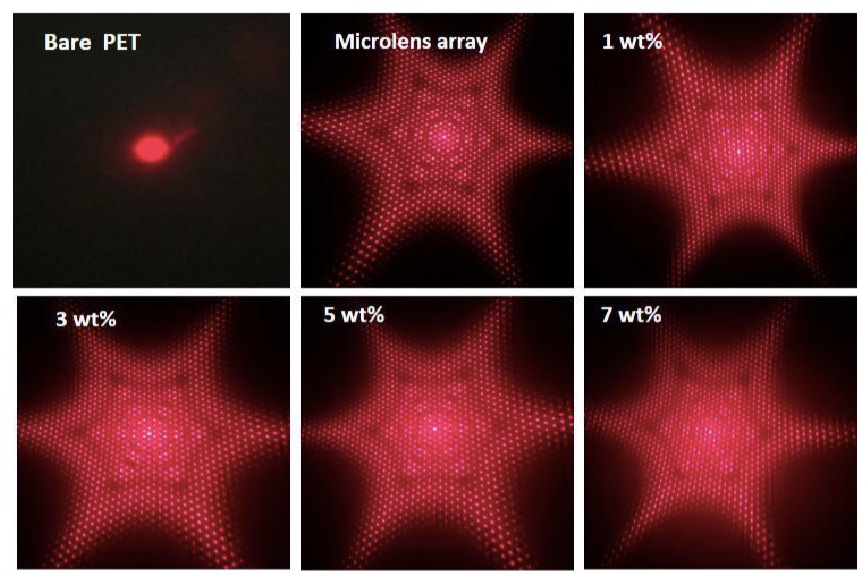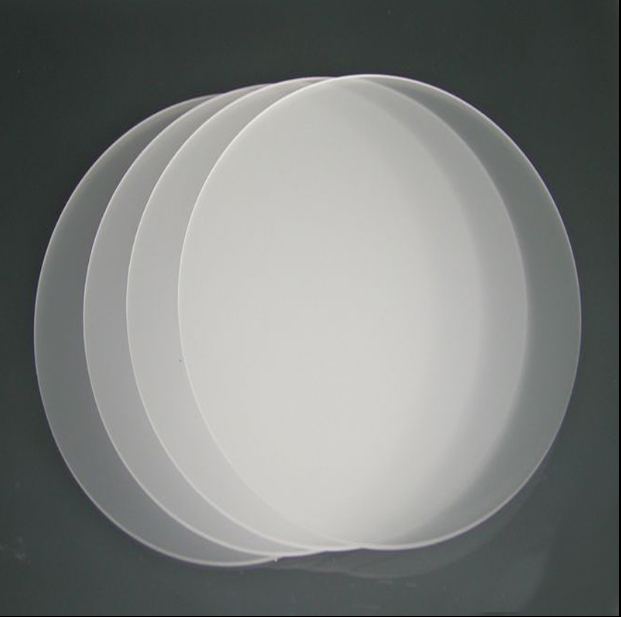Figure 3-11 shows the diffusion effect of cylindrical lens diffusion films doped with different concentrations of organosilicon particles. The light source is 650nm red laser. Use a digital camera to capture images. Figure 3-11 shows the diffusion effect of a cylindrical lens diffusion film with a doping concentration of 1 wt%, 3 wt%, 5 wt% and 7 wt% when the laser passes through the PET substrate. As can be seen from the figure, the PET substrate has almost no ability to spread light; the cylindrical lens array structure converts a point light source into a line light source, which has the function of directional diffusion. With the change of organosilicon doping concentration from 1 wt% to 7 wt%, the diffusion range becomes larger, and the central brightness of the scattering point becomes softer and softer. The light diffusion film of doped cylindrical lens array has a certain ability to control the scattering angle, brightness uniformity and haze.

Figure 3-12 shows the diffusion effect of microlens diffusion films doped with different concentrations of organosilicon. The light source is 650nm red laser. Figure 3-12 shows the diffusion effect of laser passing through the PET substrate with only microlens array light diffusion films with doping concentrations of 1 wt%, 3 wt%, 5 wt% and 7 wt%. It can be seen from figure 3-12 that the diffusion film of the doped microlens array converts a point light source into a surface light source and also has the function of directional scattering. With the increase of doping concentration, the diffusion range and brightness do not change obviously, that is, the haze does not change greatly, which is consistent with the measured data.

Fig. 3-12 650nm red laser passes through the PET substrate, only the light diffusion film of the microlens array, and the diffusion effect of the microlens diffusion film with organosilicon doping concentration of 1 wt%, 3 wt%, 5 wt%, 7 wt%.

